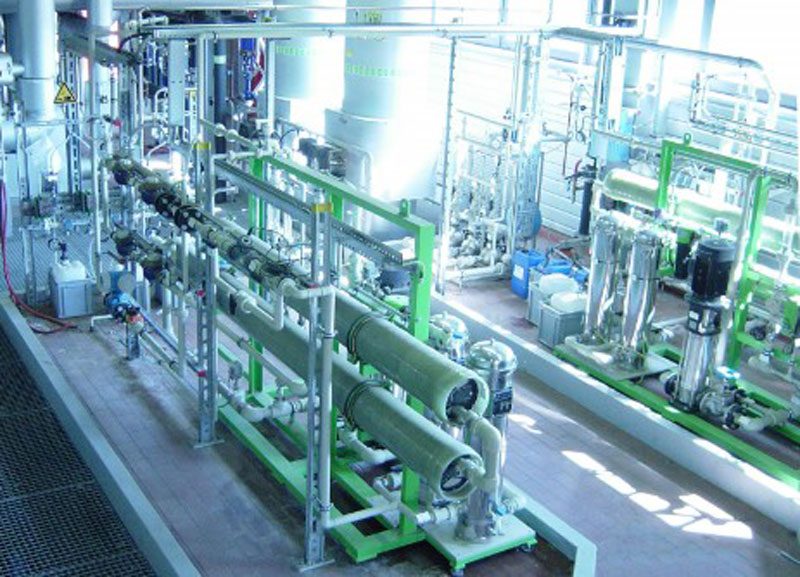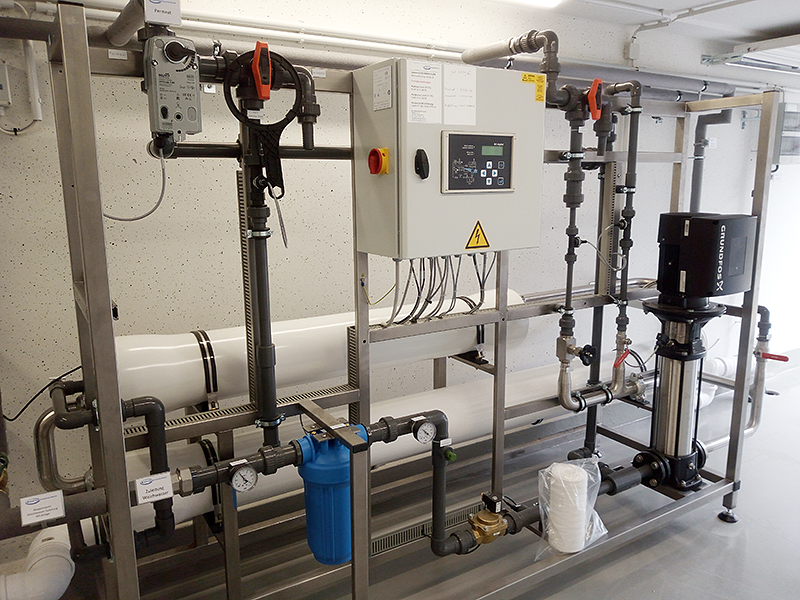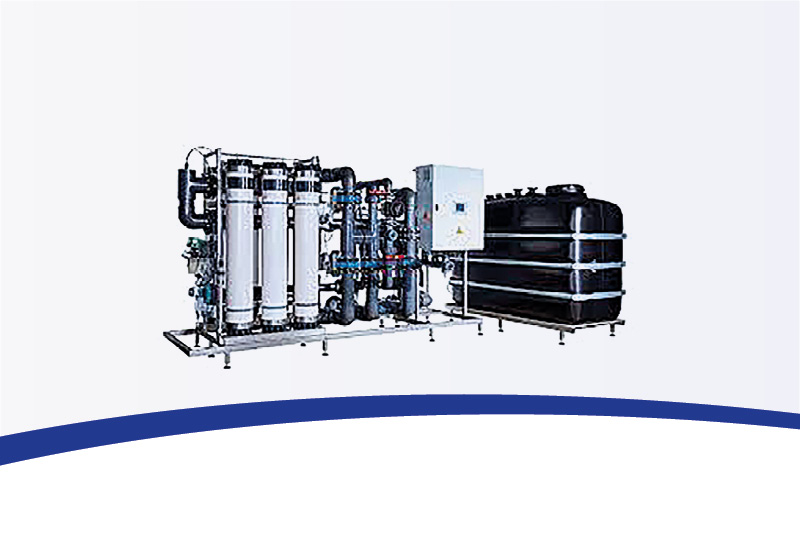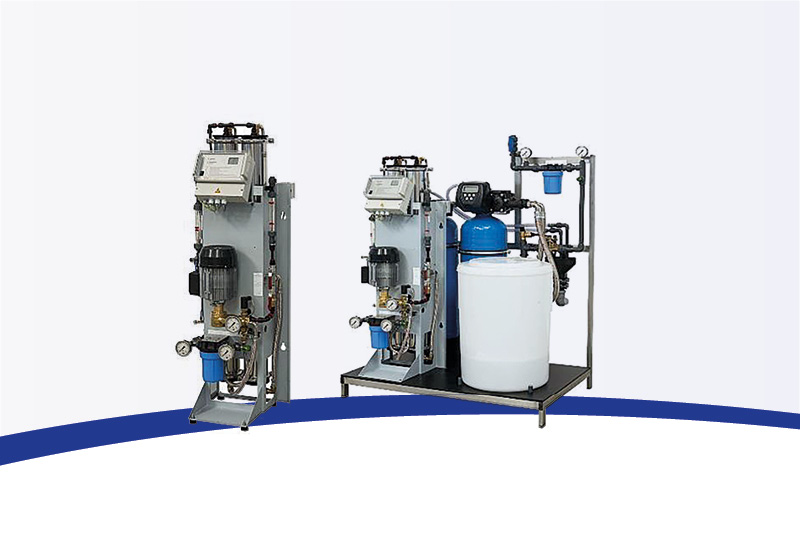Membrane technology
MICRO-, NANO-, ULTRAFILTRATION | REVERSE OSMOSIS
Membrane processes are processes in which ultrafine filtration in the submicron range is carried out using a membrane. They are used for drinking water, industrial water and wastewater treatment. Depending on the filtration requirements, the following processes are distinguished:
Reverse osmosis (RO)
Filtration spectrum: divalent and higher-valent ions, can be used in drinking water for softening or sterilisation (germ barrier)
Nanofiltration (NF)
Filtration spectrum: divalent and higher-valent ions, can be used in drinking water for softening or sterilisation (germ barrier)
Ultrafiltration (UF)
Filtration spectrum: organic molecules, colloids, salt
Microfiltration (MF)
Filtration spectrum: bacteria, particles, suspensions
The different filtration ranges are due to the use of different membranes. The most commonly used process is reverse osmosis. Membrane processes are project-based systems that require thorough clarification of technical requirements and consultation.
A water analysis is required for the technical configuration of the system.
Please contact us to discuss your problem.

Reverse osmosis system 20 m³/h Project system
REVERSE OSMOSIS
Reverse osmosis systems utilise the biological process of osmosis, i.e. the equalisation of solutions with different concentrations via a semi-permeable membrane. The process is reversible. In the reverse osmosis process, water is forced through a membrane by means of a high-pressure pump. The substances dissolved in the water (ions, particles, organic compounds, etc.) are too large to pass through these membranes. This results in permeate (pure water) on one side of the membrane and concentrate (with particles enriched in the source water) on the other side of the membrane. The desalination rates are at least 97% based on 1000 mg/l salt content of the feed water, with a standard yield of 75%. Further improvement of the permeate can be achieved by using multi-stage systems, downstream mixed bed cartridges or electrical deionisation cells. The yield can be improved to approx. 90% by using a concentrate stage to process the concentrate. Reverse osmosis systems require pre-treatment of the feed water to protect the membranes used. Water softeners, antiscalant dosing and ultrafiltration systems are often used for this purpose.
System data for our reverse osmosis systems
- 30 l/h - 40,000 l/h
- Salt retention > 97.0%
- Yield 75% - 93%
- Pre-treatment
- Softening, antiscalant dosing, ultrafiltration
- Residual hardness control via Testomat

LW RO-D4300FUPR osmosis system

Ultrafiltration system
Ultrafiltration system for use with raw water containing a high proportion of particles in the range of 20 to 0.2 μm and turbidity values of 1 NTU. Fully automatic operation via PLC control. Backwash tank with powerful, frequency-controlled backwash pump included. Individual expansion stages are available on request.

Reverse osmosis system UO
Compact reverse osmosis system for desalinating drinking water with a salt content of up to 1,000 mg/l, ready for operation ex works. Individual expansion stages are available on request.
UOCD reverse osmosis system
Compact reverse osmosis system with double softening system for desalinating drinking water with a salt content of up to 1,000 mg/l, ready for operation ex works. Individual expansion stages are available on request.
 DE
DE  EN
EN 